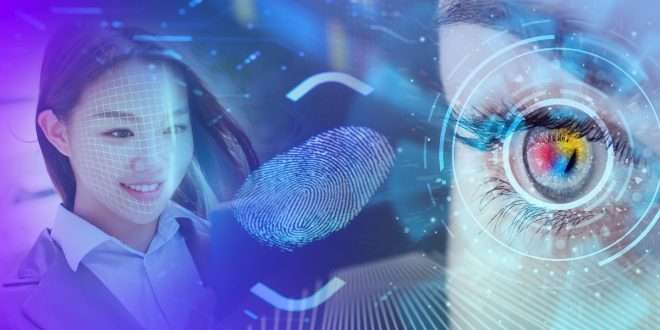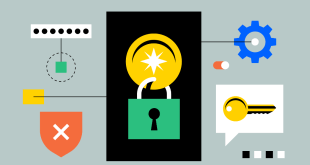Biometric encryption stands at the forefront of modern data security solutions, combining cutting-edge biometric technology with robust encryption methods to offer a harmonious blend of unwavering protection and user convenience. In this blog, we delve into the realm of biometric encryption, exploring its potential, benefits, and implementation. Discover how this innovative approach is revolutionizing data protection and providing a seamless experience for users seeking both security and ease of use.
Understanding Biometric Encryption
Biometric encryption is a sophisticated security technique that employs biometric data, such as fingerprints, facial features, or iris patterns, as cryptographic keys to encrypt and decrypt sensitive information. This advanced system eliminates the need for traditional passwords, which can be vulnerable to breaches, and replaces them with unique, physiological characteristics tied to an individual.
Biometric data is captured through specialized devices like fingerprint scanners or facial recognition cameras, and the information is then converted into a cryptographic key using complex algorithms. This key becomes the foundation for encrypting data, ensuring that only authorized users with matching biometric features can access the information.
The Power of Biometric Encryption
Enhanced Security
One of the most significant advantages of biometric encryption is its unparalleled security. Unlike traditional passwords, which can be easily forgotten, stolen, or guessed, biometric features are highly personal and difficult to replicate. This reduces the risk of unauthorized access and data breaches, providing organizations and individuals with peace of mind.
Seamless User Experience
Biometric encryption streamlines the authentication process, making it effortless for users to access their accounts or protected information. No need to remember complex passwords or go through lengthy login procedures; a simple touch of a fingerprint or a quick facial scan grants access within seconds.
Lowered Risk of Identity Fraud
As biometric features are unique to each individual, the chances of identity fraud are significantly reduced. Criminals cannot impersonate someone else’s biometric data, making it a reliable defense against fraudulent activities.
Implementing Biometric Encryption: The Process
Biometric Data Acquisition
The first step in implementing biometric encryption is capturing the user’s biometric data. This involves using specialized biometric devices, such as fingerprint scanners or facial recognition cameras, to record the individual’s unique features.
Feature Extraction and Template Creation
Once the biometric data is captured, the system extracts essential features and creates a unique template, which acts as a digital representation of the biometric information. The template is securely stored in the system’s database.
Cryptographic Key Generation
The extracted biometric template serves as the foundation for generating a cryptographic key using robust algorithms. This key is the linchpin for encryption and decryption processes.
Data Encryption and Storage
When a user attempts to access protected data, the system matches the presented biometric features with the stored template. If they match, the system generates the cryptographic key and uses it to encrypt or decrypt the data, ensuring secure storage and transmission.
Biometric Encryption Applications
Mobile Devices and Smartphones
Biometric encryption has become increasingly prevalent in modern smartphones, offering users a secure and effortless way to unlock their devices and access sensitive apps and data.
Financial Institutions
Banks and financial institutions are leveraging biometric encryption to fortify their authentication systems, protecting customers’ financial data from unauthorized access.
Government Security
Government agencies employ biometric encryption to safeguard classified information, ensuring that only authorized personnel can access sensitive data.
Commonly Asked Questions
Q1: Is biometric encryption foolproof?
A1: While biometric encryption is highly secure, no system is entirely foolproof. However, the use of multiple biometric factors and robust encryption algorithms minimizes the risk of breaches.
Q2: What happens if my biometric data is compromised?
A2: Biometric templates are typically stored in an encrypted form, making it challenging for attackers to misuse the data. In the event of a breach, systems can be updated to use new templates.
Q3: Can biometric encryption be used for online transactions?
A3: Yes, biometric encryption can be integrated into online payment systems, adding an extra layer of security to financial transactions.
Q4: Are there privacy concerns with biometric data?
A4: Biometric data is usually anonymized and stored securely. Reputable organizations follow strict privacy regulations to protect users’ sensitive information.
Q5: Can biometric encryption be combined with other security measures?
A5: Absolutely! Biometric encryption can be complemented with other security measures, such as two-factor authentication, to create a robust security framework.
Final Words
The art of biometric encryption unites the best of both worlds—impenetrable security and unparalleled convenience. By harnessing the power of biometric data as cryptographic keys, organizations and individuals can enjoy a secure digital landscape without compromising user experience. As technology continues to evolve, biometric encryption will undoubtedly play a pivotal role in safeguarding our data and ensuring a brighter, safer future.
 webfily
webfily



